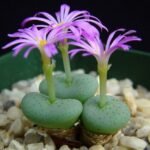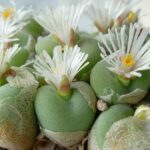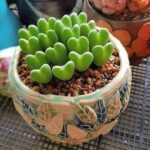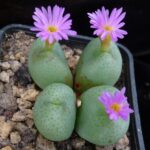Conophytum, also known as “living stones,” are fascinating succulent plants that are native to South Africa. These unique plants are characterized by their small, round bodies that resemble stones, making them excellent additions to rock gardens or container gardens. If you’re interested in growing Conophytum, here are some tips to help you care for these interesting plants.
When it comes to growing Conophytum, it’s important to provide them with well-draining soil. These plants are susceptible to root rot, so it’s crucial to use a sandy or gravelly soil mix that allows water to drain quickly. You can also mix perlite or pumice into the soil to improve drainage and aeration.
Conophytum require bright, indirect light to thrive. Place your plants in a sunny spot where they can receive at least six hours of sunlight per day. If you’re growing Conophytum indoors, place them near a south-facing window or use grow lights to provide them with the light they need.
Watering Conophytum can be a bit tricky, as these plants require careful attention to their watering needs. During the growing season, water your Conophytum sparingly, allowing the soil to dry out completely between waterings. In the winter, when the plants are dormant, reduce watering to prevent rot.
Fertilizing Conophytum is not necessary, as these plants are adapted to growing in nutrient-poor soils. However, you can feed your Conophytum with a diluted, balanced fertilizer during the growing season if you notice signs of nutrient deficiency, such as yellowing leaves.
Propagation of Conophytum can be done by division or from seed. To propagate by division, simply separate the offsets from the parent plant and plant them in their own pots. To grow Conophytum from seed, sow the seeds on top of a well-draining soil mix and cover lightly with a thin layer of sand. Keep the soil evenly moist until the seeds germinate.
With proper care and attention, Conophytum can thrive and produce beautiful, colorful flowers in the fall. These unique plants are a great addition to any succulent collection and are sure to be a conversation starter in your garden. So if you’re looking for an interesting and low-maintenance plant to grow, consider adding Conophytum to your collection.
 redboth.com Decoration ideas for your home
redboth.com Decoration ideas for your home








































